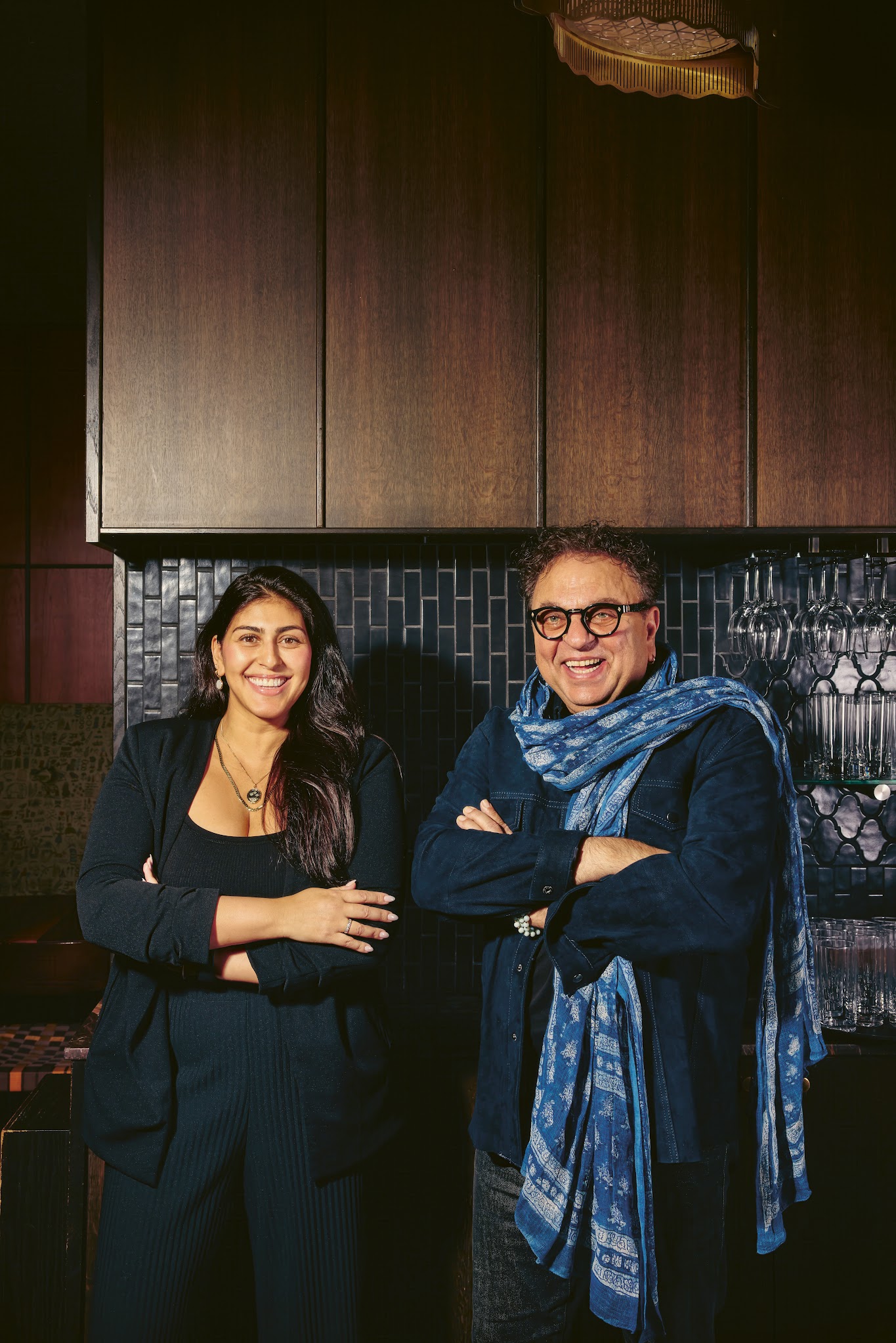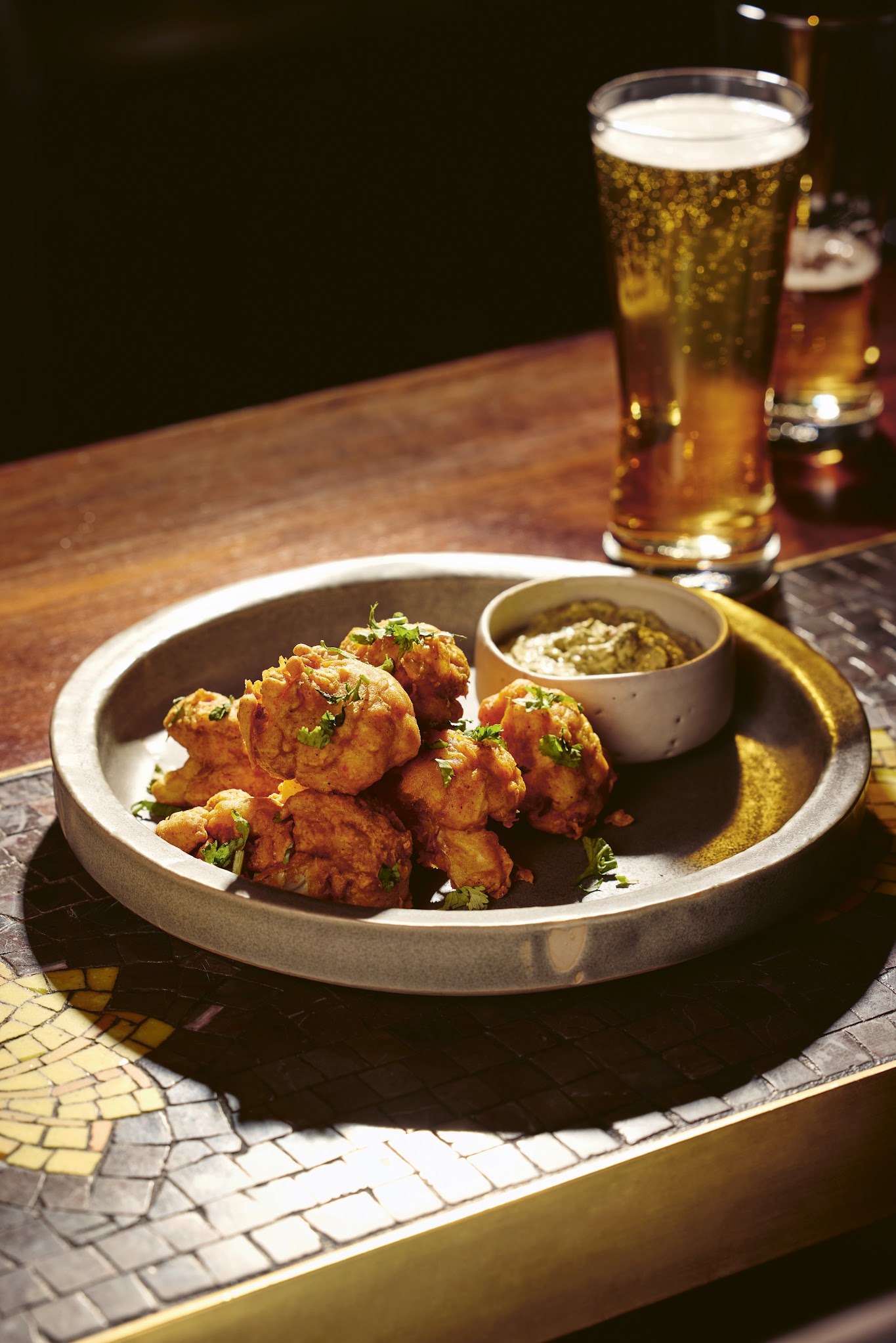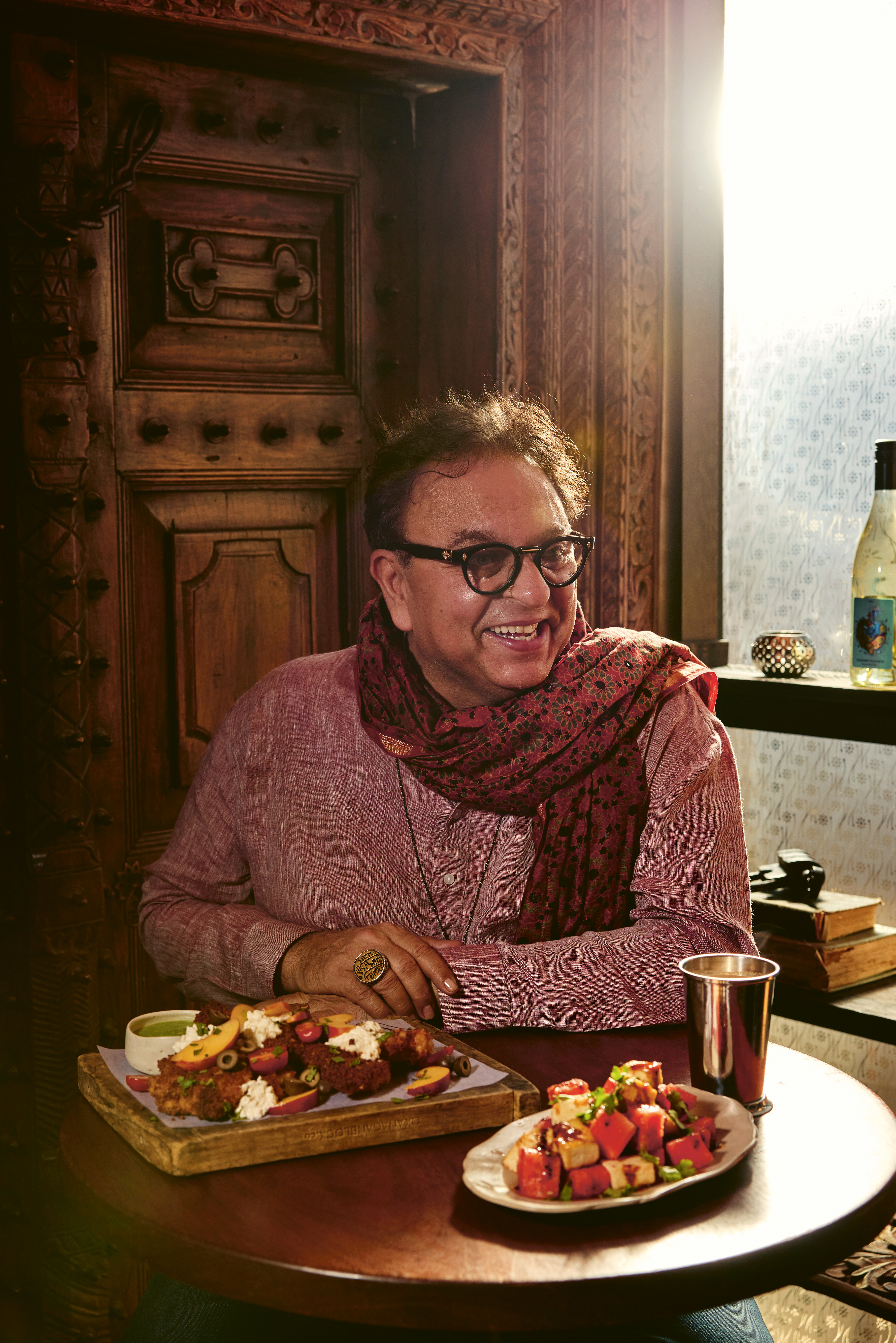In the introduction to his latest cookbook, My New Indian Kitchen, Vikram Vij writes, “You don’t make love with a knife or fork, so why eat with one?”
The Vancouver chef and restaurateur, owner of the long-established Vij’s Restaurant, is talking about using your hands to embrace the primal pleasures of food. He encourages readers to join him and his co-author and romantic partner, Jennifer Muttoo, on a culinary journey.
“Each recipe is infused with a piece of my story,” he writes, “a tale of finding love and purpose amid life’s challenges, one dish at a time.”

Jennifer Muttoo and Vikram Vij.
Now 60, Vij has experienced unanticipated plot twists in his own life story. When he and his former wife, Meeru Dhalwala, opened the original Vij’s in 1994, they were celebrated for bringing a totally new style of Indian cuisine to North America. They launched the more casual Rangoli, built a grand Surrey dining room, My Shanti, and moved Vij’s to a larger Cambie Street space, where it remains today.
Both Rangoli and My Shanti have since closed. Vij and Dhalwala divorced, and she went on to open her own Vancouver restaurant, Lila. Vij has now taken sole charge of his flagship restaurant.
Coming through these changes, Vij says he’s found solace by returning to the kitchen. “If I’m in Vancouver, I’m at my restaurant every night.”
He has always been the more public face of his restaurant, walking around the dining room to greet guests at their tables. “Now, after 30 years,” he says, “I’m wearing a chef’s jacket again.”
Vij has also embraced his new chapter with Muttoo. They met several years ago, when he stayed at the Ottawa hotel where she was the director of food and beverage. The two started travelling together as they began their journey as a couple.
Muttoo explains that the cookbook concept began to take shape through these food-focused trips. As they shared dishes, they would strategize how to improve them. “We’d say, wow, that dish was amazing, but this is what I would do to make it really pop.”
Vij had authored three previous cookbooks, but this time, Muttoo says, “he wanted to create something new. He is starting to create a new life and a new way of doing things,” and sought to craft a book that fit this evolving stage.
More than a collection of recipes, Vij and Muttoo describe this project as “a storybook.” The headnotes detail something that sparked the recipes—where they tasted a similar dish, the origin of a particular ingredient, or how a family member prepared something similar. Often, there are suggestions for substitutions to make the preparations more approachable for home cooks. Other stories are simply the chef’s remembrances, as when Vij recounts filming an episode of No Reservations with the late Anthony Bourdain.
Of the book’s 80 recipes, 16 are for drinks, which the pair says were primarily Muttoo’s inspiration. “A lot of Indian cookbooks veer away from drinks. You’ll get the traditional lassi, you’ll get the chai, but I wanted more flair,” she insists.
Both she and Vij wanted to motivate readers to think about how more modern cocktails, both alcoholic and non-alcoholic, can enhance their food. The recipes range from a simple ginger lemonade to a drink dubbed, You Can’t Always Get What You Want, a blend of scotch, honey syrup, and lemon, created in honour of rock and roll legend Mick Jagger’s visit to Vij’s after a 2024 Rolling Stones concert in Vancouver.

Spiced cauliflower fritters, from My New Indian Kitchen.
Describing herself as “a huge dessert fan,” Muttoo also brainstormed ideas for inventive sweets, such as the chocolate samosas filled with a spicy ganache. “We never like to feel constricted to the norms of what you’re able to do with, let’s say, a samosa. I wanted to have fun with it. I mean, a chocolate samosa, why not?”
Similarly, she notes, “I used to love just a traditional tiramisu, and I thought, well, why can’t we do it with chai?” The resulting recipe substitutes Indian spiced tea for coffee.
“It’s just breaking those boundaries in food, having fun and using the things you love to make it delicious,” Muttoo says.
The sections on vegetables, seafoods, and meats include both Indian standards—most with contemporary variations—and plates reflecting the co-authors’ backgrounds. The chicken schnitzel, which the chef describes as one of his favourite creations in the book, is made with burrata, tomatoes, and nectarines. “It encompasses my French training in Austria combined with Indian flavour,” Vij explains.
Jennifer’s Rice Bake, cooked in the oven with butter, onions, and stock, and Jennifer’s Saltfish, salt cod seasoned with tomatoes and onions, are both straightforward recipes from her grandmother. Vij’s aunt used to prepare Pickled Goat, the meat fried in a blend of fennel, fenugreek, and nigella seeds, seasoned with chili powder and turmeric, braised in vinegar, then chilled and served cold.
Once Vij and Muttoo decided to proceed with the cookbook, she says they began sending each other ideas. “I’d start to come up with different recipes of what I love and what would really intrigue me. And he would put together his recipes of what he’s done in his career or things that really bring him back home.”
Deciphering her partner’s scrawls, Muttoo would type the recipes, both his and hers, for Vij to double check that she’d read correctly. “It was a full collaboration back and forth, working together on every single recipe, every measurement.”
Vij is a little more philosophical about the process. My New Indian Kitchen “started like a beautiful thought, like our relationship,” he says. “Then it blossomed into this beautiful book, as we have blossomed.
“Whatever hardships you have in life, you have to just continue moving forward and recreating, reinventing, and rejuggling your life to get to your ultimate goal, which is to find happiness.”
Beautiful things can happen, the chef insists, when you dive into a project—or eat with your hands—with someone you love.
“I don’t want anybody to say this is just a cookbook. This is almost like a fable. A true fable that happened.”
Read more food stories.









